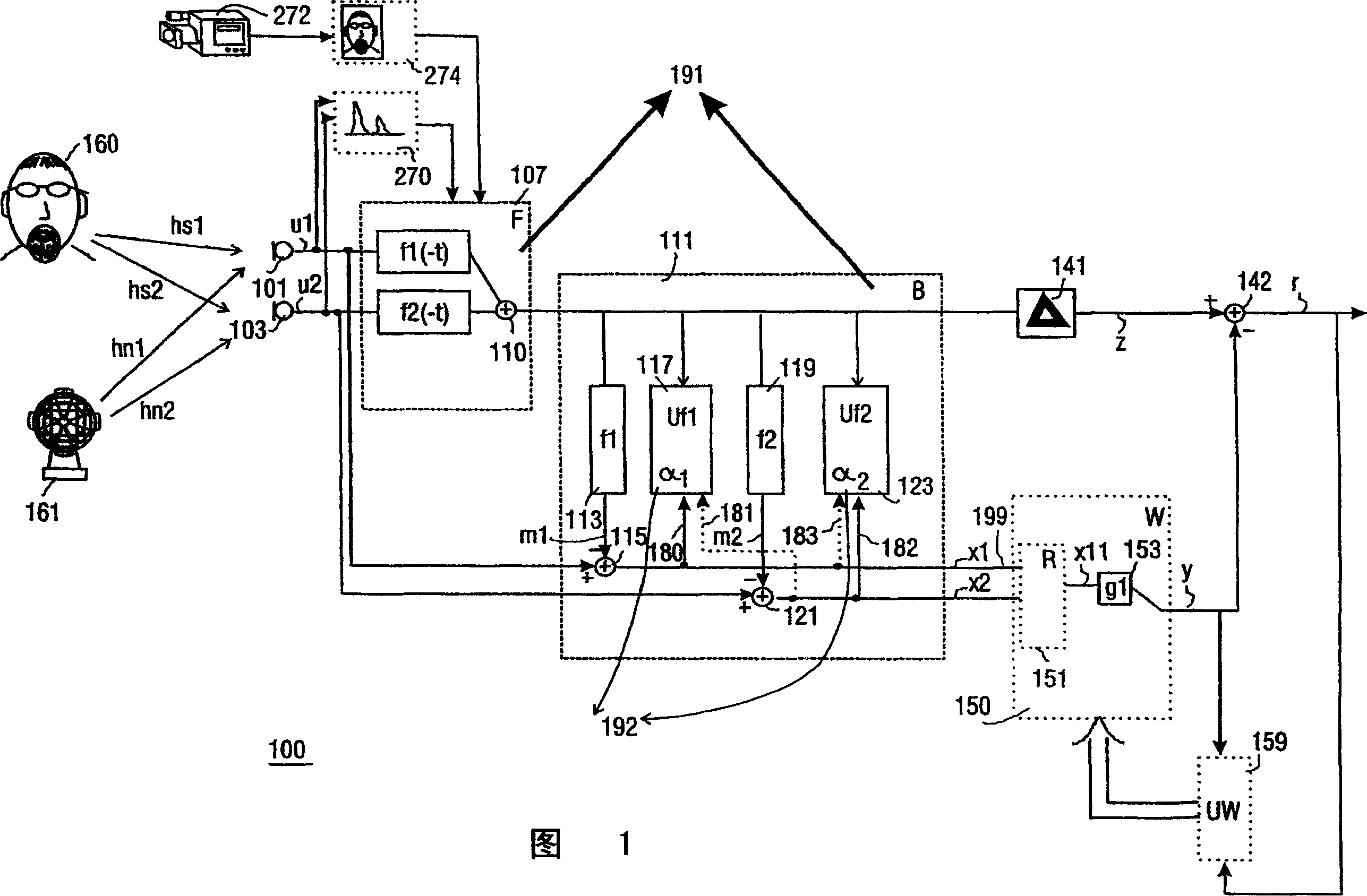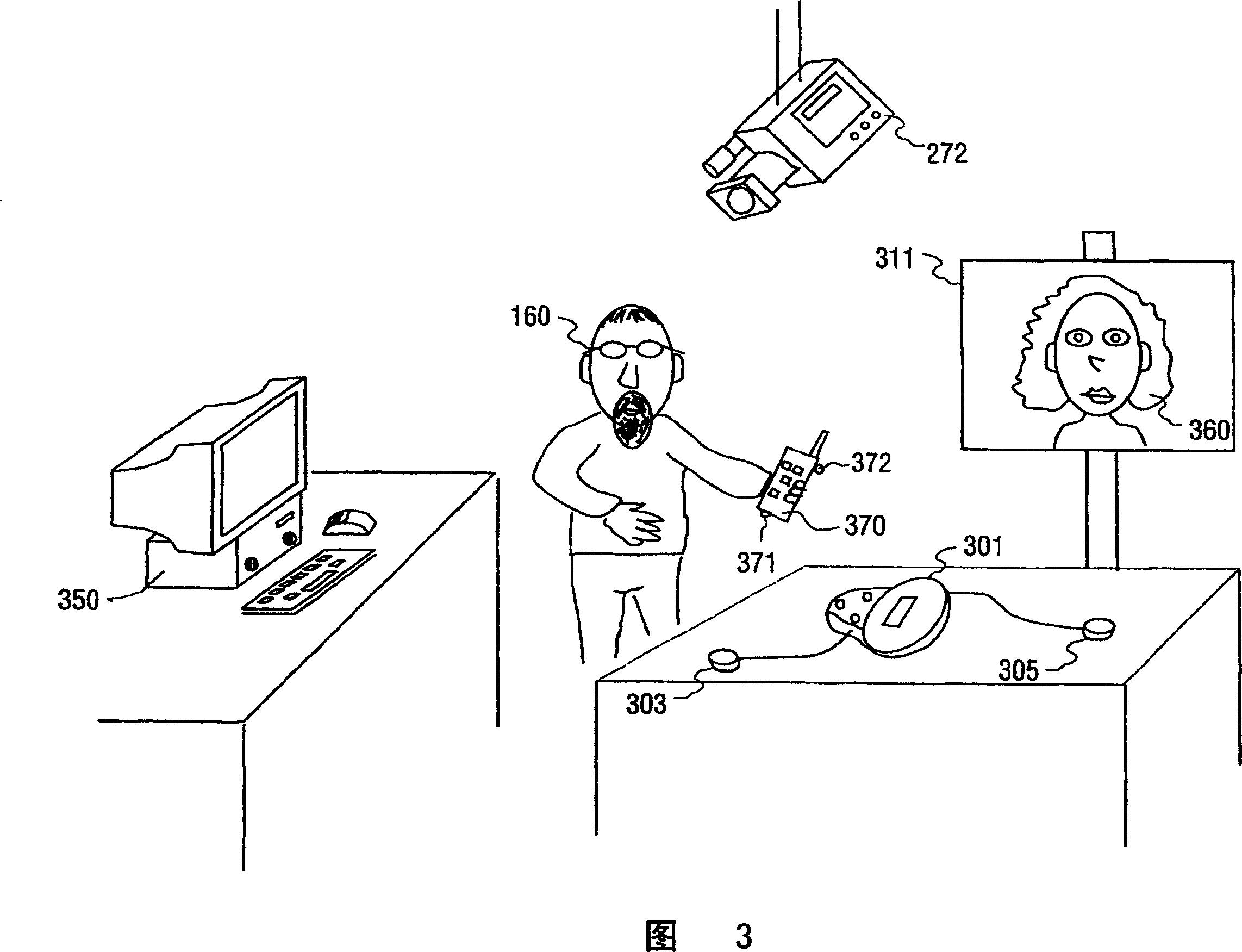Adaptive beamformer, sidelobe canceller, handsfree speech communication device
A technology of adaptive beam and sidelobe suppressor, applied in the field of adaptive beamforming or sidelobe suppression, tracking equipment, and consumer devices, can solve problems such as difficult systems, returning to the optimal state, and easy separation
- Summary
- Abstract
- Description
- Claims
- Application Information
AI Technical Summary
Problems solved by technology
Method used
Image
Examples
Embodiment Construction
[0049] In FIG. 1 , from a desired sound source 160 and possibly also from one or more undesired noise sources 161 (noise should not be understood as only random signals such as electronic thermal noise, but any undesired / interfering audio signal) Sound, which propagates to an array of at least two microphones 101,103. The signals u1, u2 output by these microphones are filtered by a first set of filters f1(-t), f2(-t) of a respective beamformer 107, the coefficients of which filter - typically one coefficient per frequency band - Able to adapt adaptively to spatially varying conditions, such as a moving desired sound source 160 . The resulting signals output by the respective filters are added by an adder 110 to generate a first audio signal z. Ideally, the filter represents the reverse path of the desired signal towards the particular microphone, so filtering the first microphone signal u1 with the first filter f1(-t) ideally obtains exactly the desired sound. Therefore, if ...
PUM
 Login to View More
Login to View More Abstract
Description
Claims
Application Information
 Login to View More
Login to View More - R&D
- Intellectual Property
- Life Sciences
- Materials
- Tech Scout
- Unparalleled Data Quality
- Higher Quality Content
- 60% Fewer Hallucinations
Browse by: Latest US Patents, China's latest patents, Technical Efficacy Thesaurus, Application Domain, Technology Topic, Popular Technical Reports.
© 2025 PatSnap. All rights reserved.Legal|Privacy policy|Modern Slavery Act Transparency Statement|Sitemap|About US| Contact US: help@patsnap.com



